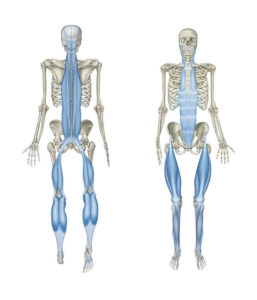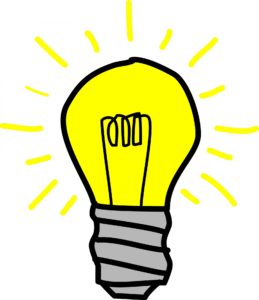“The body could become a portal to ease in the gravity and sensory world around us, rather than a living lump to be driven, dragged and measured into submission.” Linda Grace
Anatomy Trains
A pitcher throws a ball not just with his shoulders and arms but with his torso and toes. The stability and pivot of the feet contribute just as much to the power of the pitch as the torque generated by the muscles in the throwing arm.
Beyond origins and insertions, muscles connect to each other via fascial networks and form "anatomy trains." Thomas Myers developed this idea in the 1990's while working with Ida Rolf, and his work gives us a unique insight into the synergistic inter-connectivity of the human body.
The fascial system is the largest organ system in the human body, and it is the only structure that touches and communicates with all other tissues and organ systems. Scientists have even proposed that consciousness lies within its hollow tubes filled with luminous liquids.
 |
 |
The Hammock
Imagine resting your body inside a new hammock. Notice how every aspect of the hammock yields evenly to your body even while you shift to find a comfortable position. Now, imagine if extra knots are tied, if a few strands are cut, or a certain area of the hammock is dipped in glue. What happens to the hammock when you lay in it? How does it feel in your body?
The knots, cuts and glue represent injuries, disrepair and poor maintenance. Over the course of a lifetime, the fascial networks must accommodate for all the changes that occur so our body can continue to function, absorbing and re-distributing forces as we move against gravity.
Manual therapy treatments aim to improve the health of the fascial systems by releasing restrictions while therapeutic exercises strength muscle groups, especially in relationship to their anatomy train partners.
 |
 |
The Light Bulb
We are not simply a collection of muscles strung together exquisitely. Energy powers our motion. Just like a light bulb, when there is no light, two things can be happening:
- One: the filament has burned.
- Two: the energy has been compromised.
When the filament is burned, the physical body needs help. Manual therapy and exercise are ideal tools to treat problems that reside in the physical structures of the body.
When the energy has been compromised, the energetic body needs help. Acupuncture is one of the best treatments to facilitate proper flow of energy. Other energy medicine modalities such as yoga, tai chi, qi gong, meditation, and homeopathy, can also be useful.
When we have 100% of our energy available to us, we can walk 10,000 steps in a day and have plenty to spare so that whenever someone suggests a hike, we jump at the opportunity and not regret the decision. But when we have less than 100% energy, we may be able to walk 10,000 steps and no more, and we are grateful to have just enough for the day because we experience no symptoms from the day. What happens when we have only 60%, 40% or 20% energy available, and we still need to walk 10,000 steps to complete our daily tasks? Those 10,000 steps will cost us in terms of symptoms such as fatigue, pain, inflammation or injuries.
While local needling (ashi points in Traditional Chinese Medicine, or dry needling as it is known in some Physical Therapy circles) is a good approach to treat local pain, it is inadequate to treat problems related to energy flow and distribution that result in pain, weakness, and instability.
Physical Therapy with Acupuncture address musculoskeletal problems beautifully by restoring both the physical structures and the energetic elements.
The Tools of Physical Medicine
- Strain / Counterstrain (Jones Technique)
- Craniosacral Therapy
- Somatoemotional Release
- Myofascial Release
- Visceral Manipulation
- Lymphatic Drainage Therapy
- Zero Balancing
- Kinesiotaping
- Activator Method
- Therapeutic Exercise